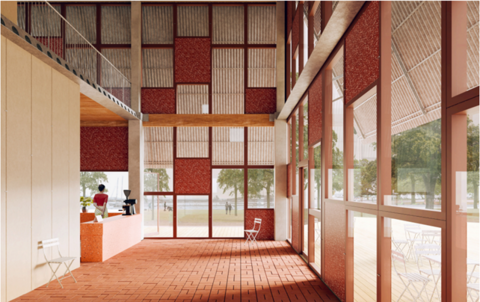Espoo Accelerates Circular Economy in Construction – A Rebuildable Demo House for Resource-Wise Building
The City of Espoo is committed to ambitious climate and biodiversity goals, which require more efficient use of existing resources. In the construction sector, one key solution is the reuse of building materials and components. Espoo is actively promoting innovative circular economy solutions that support low-carbon and resource-efficient construction. A rebuildable demo house offers companies and research institutions a test platform for developing reusable materials and technologies.
Circular economy in the built environment has long been a topic of discussion, but practical examples in Finland remain scarce. Currently, 41 million tons (38%) of all materials used in Finland each year go into construction, yet only a fraction of these materials are reused or recycled.
Developed by VTT and Aalto University’s Department of Architecture, The Circular Drifter – commonly referred to as the demo house – explores the potential of buildings designed for disassembly. The concept was created by Aalto University doctoral students Havu Järvelä and Heljä Nieminen under the supervision of professors Matti Kuittinen and Antti Lehto. This innovative demo house serves as a research environment where the functionality of recyclable building materials and technologies can be tested in practice. The building is designed to be dismantled and reassembled at least twice during its lifecycle. This approach allows for real-world testing of materials and structural solutions in dismantling and reuse scenarios. The assembly and reuse processes are planned to minimize waste and emissions while enabling the building to adapt in size and form to new purposes.
The project’s concept phase involved the City of Espoo, VTT, and Aalto University, alongside companies such as Peikko Finland, Kiilto Family, Saint-Gobain, Durat, Aulis Lundell Oy, Sweco, and SSAB. The demo house aims to provide businesses and research institutions with a shared test platform for developing and experimenting with circular economy building materials and solutions. At the same time, it seeks ways to improve the feasibility, adaptability, and economic viability of building disassembly and material reuse.
Cities Play a Key Role in Advancing the Circular Economy
From Espoo’s perspective, buildings designed for disassembly offer an effective way to reduce the environmental impact of construction, including minimizing construction waste. The design ensures that building components, such as concrete beams and hollow-core slabs, can be reused without significant processing.
“Circular economy projects in the construction sector are a major step toward more sustainable and innovative urban development. The goal is to promote new technologies and operating models that make dismantlable and reusable building solutions the norm of the future,” says Tessa Armour, Senior Specialist at the City of Espoo.
In the future, the demo house is intended to be implemented in a way that allows it to be relocated to different cities. It will be placed in a visible and easily accessible location to spark discussions on circular economy in construction among industry professionals and the general public. The demo house offers companies a platform to showcase and test their circular economy solutions in practice. Espoo aims to leverage insights from innovation projects and pilot studies to further develop processes and procurement practices that embed circular economy principles into the construction industry.
